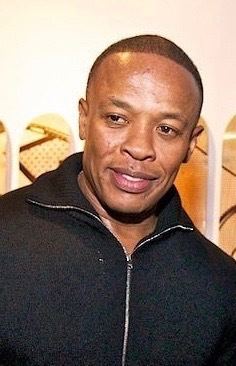 | ||
Stylistic origins Funkgangsta rapP-FunkR&Bwest coast hip hop Typical instruments Turntablessynthesizerkeyboardswoodwindskeyboarddrum machinestringsrappingbackground vocalstalkbox | ||
G-funk, or gangsta-funk, is a subgenre of hip hop music that emerged from West Coast gangsta rap in the early 1990s.
Contents
Characteristics
G-funk (which uses funk with an artificially altered tempo) incorporates multi-layered and melodic synthesizers, slow hypnotic grooves, a deep bass, background female vocals, the extensive sampling of P-Funk tunes, and a high-pitched portamento saw wave synthesizer lead. The lyrical content depended on the artist and could consist of sex, drugs, violence, vandalism and women, but also of love for a city, love for friends and relaxing words. There was also a slurred “lazy” or "smooth" way of rapping in order to clarify words and stay in rhythmic cadence.
Unlike other earlier rap acts that also utilized funk samples (such as EPMD and The Bomb Squad), G-funk often utilized fewer, unaltered samples per song. Music theorist Adam Krims has described G-funk as "a style of generally West Coast rap whose musical tracks tend to deploy live instrumentation, heavy on bass and keyboards, with minimal (sometimes no) sampling and often highly conventional harmonic progressions and harmonies". Dr. Dre, a pioneer of the G-funk genre, normally uses live musicians to replay the original music of sampled records. This enabled him to produce music that had his own sounds, rather than a direct copy of the sample.
Origins
G-funk, given its name by Laylaw from Lawhouse Production, became a very popular genre of hip hop in the 1990s. Although G-funk originated in Los Angeles, the subgenre drew a large amount of influence from the earlier Bay Area-based sound known as Mobb music of the mid- to late 1980s, pioneered by Oakland rappers like Too Short & E-40. Too Short had experimented with looping sounds from classic P-Funk records over bass-heavy tracks during this period. However, unlike Bay Area Mobb music, Southern California-born G-funk used more portamento synthesizers and less live instrumentation. Too Short's lazy, drawl-heavy delivery was also a major influence on later G-funk rappers like Snoop Dogg.
There has been some debate over who should be considered the "father of g-funk". Dr. Dre is generally believed to have developed the sound, but Cold187um and KMG of Above the Law, Laylaw for Lawhouse Production have claimed that they developed the sound. Cold187um and KMG claim that Dr. Dre did not credit the group for pioneering the style when he released The Chronic, his Death Row debut album. They both released records on Ruthless Records prior to that. Warren G and Snoop Dogg were with Cold187um before joining Dr. Dre and Death Row. On Snoop Dogg's Doggystyle album, Warren G and Daz Dillinger from Tha Dogg Pound claim they produced "Ain't No Fun", even though Dre is credited as the album's sole producer.
The earliest use of sine wave synthesizers and Parliament-Funkadelic-style bass grooves in Dr. Dre's work appeared on N.W.A's single "Alwayz into Somethin'" from their 1991 album Efil4zaggin. When Dr. Dre's 1992 Death Row debut album The Chronic was released, the album was immensely successful, and consequently made g-funk a popular genre of hip hop.
Another early G-funk pioneer, also from Compton, was rapper and producer DJ Quik, who was already using P-Funk instrumentals as early as 1991 in his debut album Quik Is the Name, though his most recognizable G-funk album would be 1995's Safe & Sound and also Battlecat, whose aesthetic is a progression from the early-'90s G-Funk sound pioneered by the group Above the Law, characterized by phat synth bass lines and soulful keys. Other well known artists that used G-funk were Bone Thugs-n-Harmony, Tupac Shakur, Nate Dogg, Mac Dre, Spice 1, Geto Boys, Havoc & Prodeje, BG Knocc Out, Dresta, Rappin' 4-Tay, 3X Krazy and Warren G. Warren G's first album was called Regulate...G Funk Era, which featured Nate Dogg - who called himself "the king of G-funk".
Many contemporary West Coast rappers have released albums with strong G-Funk influences in recent years. Kendrick Lamar with Good Kid, M.A.A.D City, YG (rapper) with Still Brazy and Schoolboy Q with Blank Face LP.
